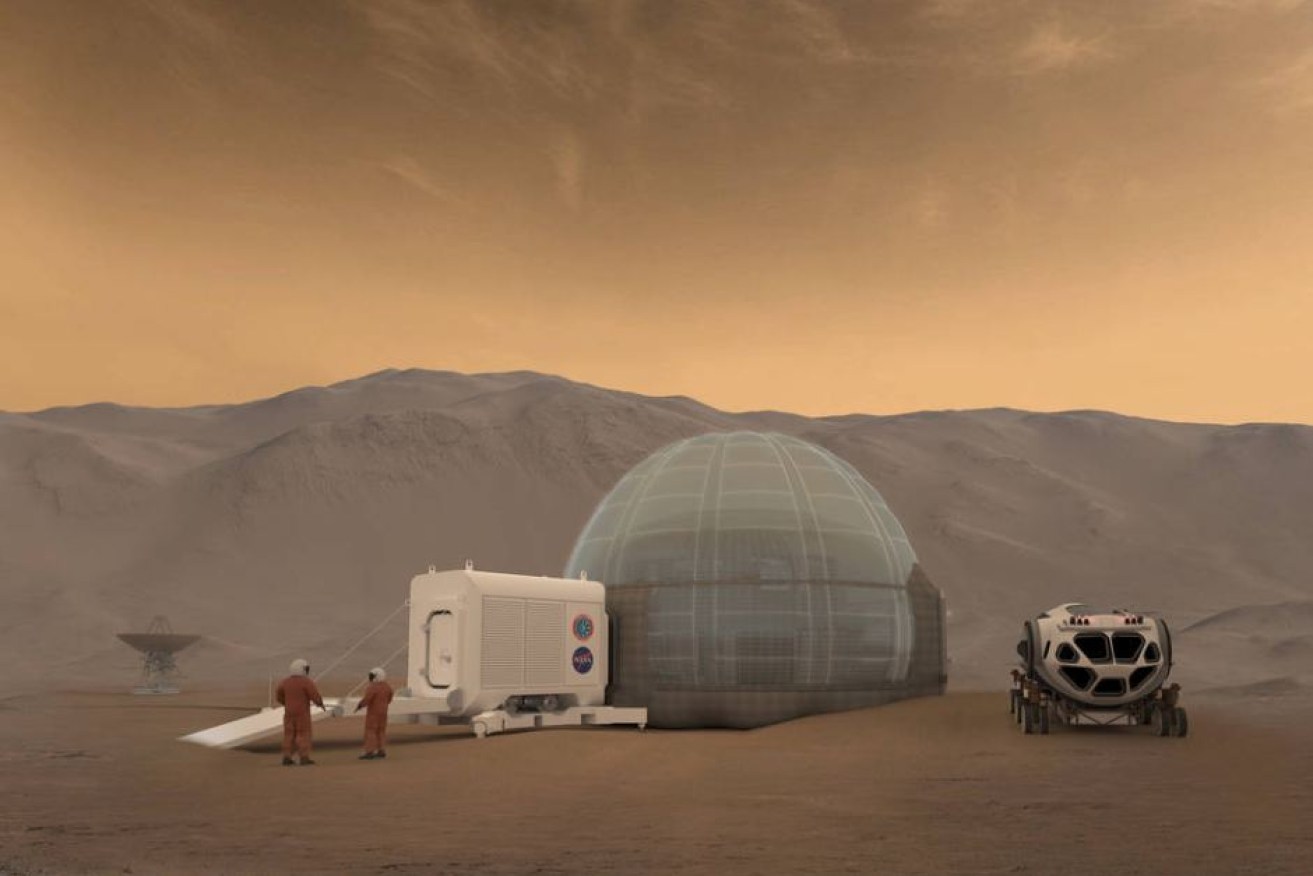NASA releases ‘ice home’ concept for living on Mars

Astronauts who — eventually — visit Mars are likely to stay for weeks, rather than days. Photo: NASA/SEArch/Clouds AO
NASA has unveiled its concept for houses on Mars and according to the space agency’s researchers, the best building material for these structures is rather unexpected – ice.
Because astronauts who visit Mars are likely to stay for weeks, rather than days, they will need a structure both to call home for that period and to protect them from the harsh environment of the Red Planet.
During a day of brainstorming, experts at NASA’s Langley Research Centre in the US state of Virginia, along with a group of designers and architects, put forward a concept they described as a “Mars ice home”.
“After a day dedicated to identifying needs, goals and constraints we rapidly assessed many crazy, out of the box ideas and finally converged on the current ice home design, which provides a sound engineering solution,” senior systems engineer Kevin Vipavetz said.
NASA described the dome as “a large inflatable torus, a shape similar to an inner tube, that is surrounded by a shell of water ice”.
“The Mars ice home design has several advantages that make it an appealing concept,” the team said.
“It is lightweight and can be transported and deployed with simple robotics, then filled with water before the crew arrives.”
Shelter on Mars also needs to protect astronauts from galactic cosmic rays and space radiation – and although the most effective means of doing so would be to build an underground habitat, this would require heavy robotic equipment.
Researcher Sheila Ann Thibeault said it was a challenge to find a material that could provide this protection.
“The materials that make up the ice home will have to withstand many years of use in the harsh Martian environment, including ultraviolet radiation, charged-particle radiation, possibly some atomic oxygen, perchlorates, as well as dust storms,” she said.
‘You’re in a home and not a cave’
But the thick ice of the ice home would provide a balance, reducing exposure – and allowing light to pass through.
“All of the materials we’ve selected are translucent, so some outside daylight can pass through and make it feel like you’re in a home and not a cave,” ice home principal investigator Kevin Kempton said.

A cutaway of the interior design of the Mars Ice Home concept. Photo: NASA Langley/ Clouds AO/SEArch
This feeling of “home”, Dr Kempton said, was also an important consideration.
“After months of travel in space, when you first arrive at Mars and your new home is ready for you to move in, it will be a great day,” he said.
The team said – based on the amount of water that could be reasonably extracted from Mars – their design would allow the ice home to be completely filled and covered in ice within about 400 days.
The ice home is one of several ideas for habitation on Mars, as the agency continues to work towards its goal of putting a human on the Red Planet.








